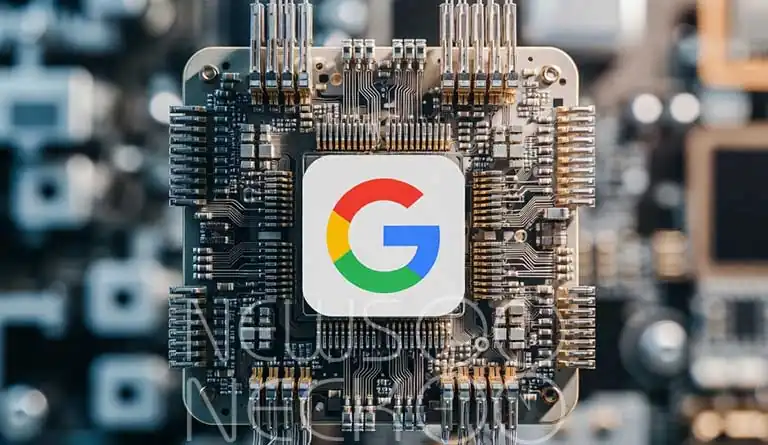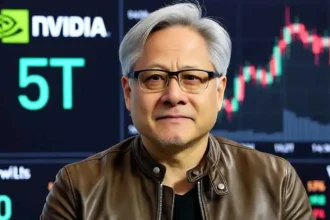“Inside Google’s Secret Weapon: How a Decade of Chip Building is Powering Its AI Revolution”
When most people think of Google, they imagine the world’s biggest search engine, YouTube videos, or Gmail notifications. But deep inside Google’s data centers lies a quiet revolution- one that could shape the future of artificial intelligence.
After more than ten years of research and development, Google’s long bet on building its own computer chips is finally paying off. These chips, known as Tensor Processing Units (TPUs), are becoming the hidden engine behind some of the world’s most powerful AI systems.
And now, with the unveiling of its newest chip, Ironwood, Google is sending a clear message to its competitors: the company isn’t just following the AI race- it’s building the track.
The Secret Behind the Silicon
For years, Nvidia has been the king of AI chips. Its graphic processing units (GPUs) power everything from self-driving cars to the world’s smartest chatbots. Tech giants like Microsoft, Amazon, and even Google have been buying Nvidia chips in massive quantities just to keep up with the explosive demand for AI computing power.
But Google has quietly been working on something different chips designed only for artificial intelligence. These are not the kind of processors found in your laptop or gaming console. TPUs are built to do one thing extremely well: process complex AI tasks at lightning speed while using less power.
Ironwood, the seventh generation of Google’s TPUs, takes this idea to a new level. The company says it’s four times faster than its previous version and is designed to handle everything from training giant language models to powering real-time AI assistants.
Even major AI startups, like Anthropic, plan to use as many as a million Ironwood chips to run their next-generation AI model, Claude. That’s a massive endorsement for Google’s technology- and a sign that its chips are ready to compete head-on with Nvidia’s.
A Decade in the Making
Google’s chip journey began more than ten years ago, long before AI became the buzzword it is today. Back then, engineers inside the company saw a problem coming: the world’s appetite for AI would soon outgrow traditional computer hardware.
So they started building TPUs—custom chips meant to handle AI training and data processing much more efficiently. At first, Google used them only for internal purposes, like improving search results or training the company’s translation systems.
But by 2018, the company decided to open this technology to its cloud customers. That meant anyone using Google Cloud could now access the same powerful hardware that runs Google’s own AI.
This move turned TPUs into one of Google Cloud’s biggest assets. And today, that strategy seems to be paying off- big time.
You Might Like it: Google $15 Billion AI Investment in India
The Business Impact
Google’s AI chips are not sold as physical hardware. Instead, the company offers them as a cloud service, where customers rent computing power rather than buying the chips outright.
In the company’s most recent quarterly report, Alphabet (Google’s parent company) revealed that its cloud revenue jumped 34% from last year, hitting $15.15 billion. That kind of growth doesn’t happen by accident and much of it is being driven by the rising demand for AI computing, powered by TPUs and Nvidia GPUs alike.
CEO Sundar Pichai described the surge clearly:
“We are seeing substantial demand for our AI infrastructure products, including TPU-based and GPU-based solutions,” he said during an earnings call. “It is one of the key drivers of our growth over the past year.”
Some analysts even believe that if Google’s TPU business were spun off into a standalone company, it could be worth nearly $900 billion on its own. That’s almost as valuable as Amazon or Meta- all thanks to chips most people have never even heard of.
Related Post: Sundar Pichai Announced Google’s $85 billion investment in AI.
Outpacing the Competition
While other tech giants are also experimenting with custom AI chips, none have gone as far as Google.
Amazon introduced its Inferentia and Trainium chips, but they’re still gaining traction. Microsoft only launched its first custom chip, Maia, in late 2023.
Analyst Stacy Rasgon from Bernstein summed it up perfectly:
“Of the ASIC players, Google’s the only one that’s really deployed this stuff in huge volumes. For other big players, it takes a long time and a lot of money. They’re the furthest along.”
In other words, while others are still testing the waters, Google is already swimming laps.
Efficiency: The Hidden Advantage
One of Google’s biggest strengths lies in how efficient its chips are. Because TPUs are designed specifically for Google’s workloads, they consume less power and deliver higher performance compared to general-purpose processors.
And that’s becoming a crucial advantage. As global data centers expand to keep up with AI demand, power is quickly turning into the next big bottleneck. In some regions, there simply isn’t enough electricity to fuel the massive AI infrastructure that companies are building.
By creating chips that do more work with less energy, Google is not only saving costs but also preparing for a future where energy efficiency might be as important as raw power.
Beyond Earth: The Project Suncatcher Vision
Just when it seems Google’s ambitions couldn’t reach any higher they literally do.
Earlier this week, Google revealed Project Suncatcher, an experimental plan to use its TPUs in space. The idea is both bold and futuristic: to build a network of solar-powered satellites carrying AI chips that harness energy directly from the sun.
The company aims to launch two prototype satellites by early 2027. If successful, it could open the door to massive-scale computation in space, where clean solar energy is unlimited and the environmental impact on Earth is minimal.
“This approach would have tremendous potential for scale and also minimizes impact on terrestrial resources,” Google said in its announcement.
Imagine a future where AI systems are powered by sunlight captured in orbit — it sounds like science fiction, but Google is already working on it.
The Bigger Picture
The rise of AI has turned computer chips into one of the most valuable resources on the planet. Whoever controls the best hardware will control the pace of innovation. And while Nvidia remains the market leader today, Google’s quiet progress is proving that it’s more than just a customer- it’s a competitor.
Its long-term investment in TPUs has positioned the company not just to keep up with the AI boom, but to lead it. With projects like Ironwood and Suncatcher, Google is showing that its vision for AI doesn’t stop at building smarter software- it’s about building smarter machines to power that software.
And that might just be the smartest move of all.
Author: Yasir Khan
Date: 07 Nov, 2025
For More Updates, Visit Newsneck














One Comment
益群网:终身分红,逆向推荐,不拉下线,也有钱赚!尖端资源,价值百万,一网打尽,瞬间拥有!多重收益,五五倍增,八级提成,后劲无穷!网址:1199.pw